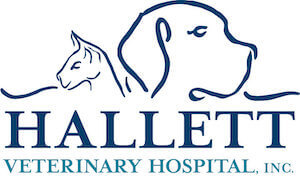Support and Transfer of Traumatic Injury Patients
Transporting an injured animal to the appropriate medical facility can be an emotional experience for an owner. Knowing your regular veterinarian's normal business hours, as well as directions and the phone number of your area's emergency veterinary clinic are essential. Self-protection and immobilization of the pet are important things to consider when transferring an injured animal. Calling ahead to the clinic can help the staff prepare for your pet's arrival.
Protecting yourself from possible injury is a top priority. Animals that are painful and/or scared have been known to bite even life-long owners so severely that hospitalization of the owner is required. Therefore, restraint of the pet is essential.
Restraining dogs is primarily an issue of having control of the head and mouth. Using a length of rope, towel, belt, or other similar objects to wrap around the muzzle will give you the ability to help your pet while not being in danger yourself. The first step is to tie a loop into the rope that your dog's muzzle will fit through. You want the loop to be much larger than necessary since once the dog's muzzle is inside the loop, you tighten it. After the muzzle is tightly closed, you can wrap the rope around a second time and then secure it behind the animal's head. The end results looks very similar to a horse halter. If this is not successful, you can place a large blanket over the animal's head to assist in transport. Be aware, however, that dogs can bite through the blanket.
In cases where restraint of a cat is necessary, the blanket is the best choice if the cat is uncooperative. Again, be aware that cats are capable of biting through even the thickest of blankets.
If at any time during transport you notice that your pet's breathing has become labored or stops, remove or loosen any muzzle material and blankets from around the face. Allow them to find a comfortable place and limit contact until reaching the hospital.
Immobilizing the patient for transport should be done with caution. Use a blanket as a stretcher for large dogs that are not able to walk well. Other items that work well for moving injured patients include a card table or ironing board. Piling blankets around them during transport can also decrease movement.
The best way to immobilize a cat is to place them in a cardboard box. This often works better than a cat carrier because there is not a door to work around. Placing a large amount of blankets or towels around them can decrease movement.
It is also important to call ahead to the clinic you will be going to. Hallett Veterinary Hospital is open Monday through Friday from 7:30am to 6pm and Saturdays from 8am to 4pm. After these hours, we refer clients to the Emergency Veterinary Service in Waukesha. The receptionist will get preliminary information from you that will allow the staff to prepare for your arrival. Pertinent information includes: age, breed, approximate weight, and type, location, and severity of injury. It is helpful to let the staff know before your arrival if the animal is in any kind of respiratory distress or has lost consciousness after the injury occurred.
Driving at a safe and legal speed is also important. Although the situation is certainly a stressful one, it is important that you reach the hospital safely. If an accident occurs, it will not be a priority for paramedics or law enforcement to ensure your pet's arrival at a medical facility.
Protection of owners, immobilization of the patient, and getting preliminary information to your clinic are all things that will enable your animal to receive the best care possible.
